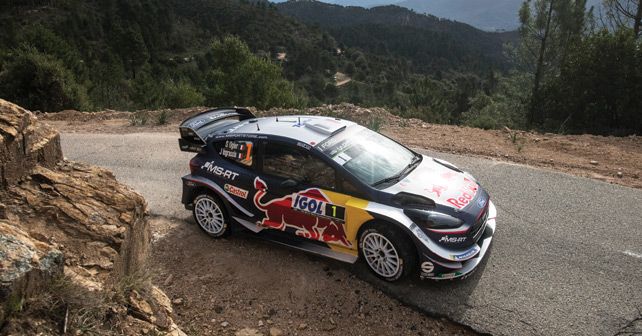The Tour de Course and its tarmac surface led to a more straightforward victory for Sebastien Ogier.
Is there ever any such thing as a straightforward rally? Well, maybe one could have made that argument when Sebastien Ogier was dominating the WRC. However, the WRC has thrown up its fair share of surprises since last year, not least because of how the start order rules adversely affect the championship leader. This has become a lot more apparent ever since Ogier’s very clear car advantage got taken away with VW’s exit. Another thing that became apparent since 2017 is that the Frenchman didn’t win four-straight WRC titles simply because he had the fastest car. He is clearly also the fastest and most consistent driver too. The two tarmac events where the start order doesn’t affect those that run after the driver that opens a stage – Monte Carlo Rally and the Tour de Course – brought Ogier’s talent to the fore and allowed him to extend his advantage over Hyundai’s Thierry Neuville.
The Frenchman has won three out of four events this year. And his Tour de Corse victory was his second win at the event, which came 10 years after the five-time world champion secured the junior world title at the rally. He heads the championship by 17 points, at the time of printing. Ogier made his intentions clear by winning the first super special stage of the rally. Three fastest times out of four earned him a lead of more than half a minute and afforded him the luxury of managing his pace over the final two legs.
Ott Tänak finished second for Toyota. But the Estonian had a battle on his hands with Thierry Neuville. The Ogier vs Tanak fight that many fans had hoped for has not yet materialised, but like in Monte Carlo, Tanak was the fastest driver after Ogier. He distanced himself from the Belgian in the 55km marathon opening test and widened the gap to 31.4sec, as Neuville encountered problems. He limped through the final stage with engine troubles in his Hyundai i20 and was grateful to hold a large advantage over team-mate Dani Sordo. He finished 55.1sec clear of the Spaniard.
Sordo and Elfyn Evans were never split by more than a handful of seconds throughout the rally. The Welshman had to settle for fifth in his Fiesta, a fine result as 2003 world champion co-driver Phil Mills replaced the injured Dan Barritt for his first WRC rally in almost eight years.
There was heartbreak for Esapekka Lappi. The Finn thrust himself into the fight for second, but his hopes were shattered when he hit a kerb and stopped to change a punctured tyre. Ironically, Neuville hit the same kerb but escaped. Lappi plunged to seventh, but salvaged maximum bonus points by winning the final Power Stage in his Yaris as well as overhauling Andreas Mikkelsen to climb to sixth.
Jan Kopecky won the WRC-2 class for Skoda to make it two wins out of the two in which he has taken part this year. The WRC-2 class is going to become a lot more interesting for Indian motorsport fans from this year, as Team MRF announced its participation with their star driver Gaurav Gill behind the wheel. More details of the program are yet to come, including which car the team will use, but they are expected to be in action in the Rally de Portugal in mid-May. Seeing Gill go up against Kopecky, Pontus Tiedemand and Ole Christian Veiby in the WRC-2 class (all of whom have been teammates with him in APRC) will be a surreal experience for those who were waiting for the Indian to get a shot at the WRC stage again since he took part in the erstwhile Production World Rally Championship in 2008 and 2009.






























Write your Comment